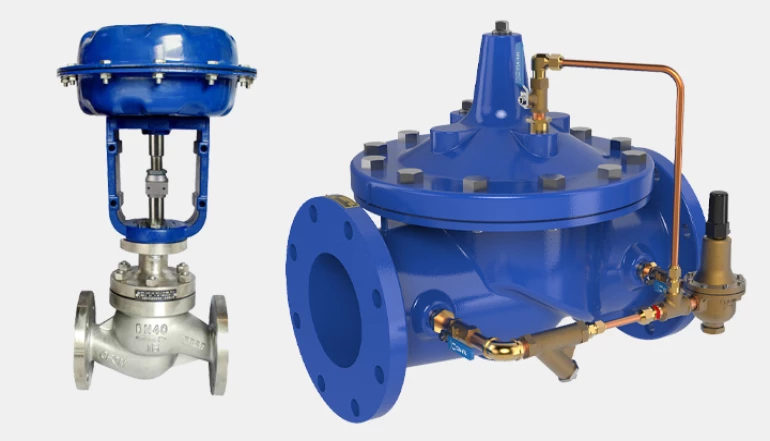Industrial control valves are pivotal devices employed across a multitude of industries, notably in the oil and gas sector, to govern and manage essential operating parameters like flow rates, pressure levels, temperatures, and liquid levels within a system. These valves play a critical role in ensuring efficiency and optimal performance in industrial processes.
The anatomy of an industrial control valve typically encompasses several fundamental components:
-
Bonnet: Situated at the top of the valve, it houses the diaphragm and spring.
-
Spring: Its purpose is to maintain appropriate tension on the stem, thereby ensuring the valve remains in a specific position.
-
Actuator: This component receives signals from a controller and orchestrates the valve's adjustments accordingly.
-
Stuffing Box Assembly: It creates a secure seal, effectively preventing any potential leakage.
-
Travel Indicator: This provides a visual representation of the valve's current position.
-
Stem & Seal: This dynamic duo either blocks or permits the flow through the valve.
The design spectrum of industrial control valves is quite diverse, tailored to meet specific requirements and applications. Some notable variations include:
- Sliding Gate Valves
- Angle Valves
- Globe Valves
- Wafer Style Sliding Gate Valves
- Electric Valves
- Motor Operated Valves
- Bellows Seals Valves
In terms of functionality, industrial control valves operate on the principles of a control loop, receiving signals from controllers or actuators. These signals guide the valve in adjusting the size of the flow passage, effectively regulating the fluid flow. This control is pivotal in managing the flow, pressure, and temperature of the processed media.
The advantages of using industrial control valves are manifold. They offer easy installation, automated operation, obstruction control, and waste reduction. This makes them environmentally friendly and a preferred choice in numerous industries, including air, oil, and gas, food and beverages, steam services, and flow control applications.
The selection of a suitable control valve type hinges on various factors such as pipe dimensions, system pressure, the nature of the flowing media, and specific application requirements. Globe valves, with their diverse plug configurations influencing flow characteristics, find widespread use across different industries. However, the ultimate selection should align with the unique needs and demands of the specific industry and application at hand.


